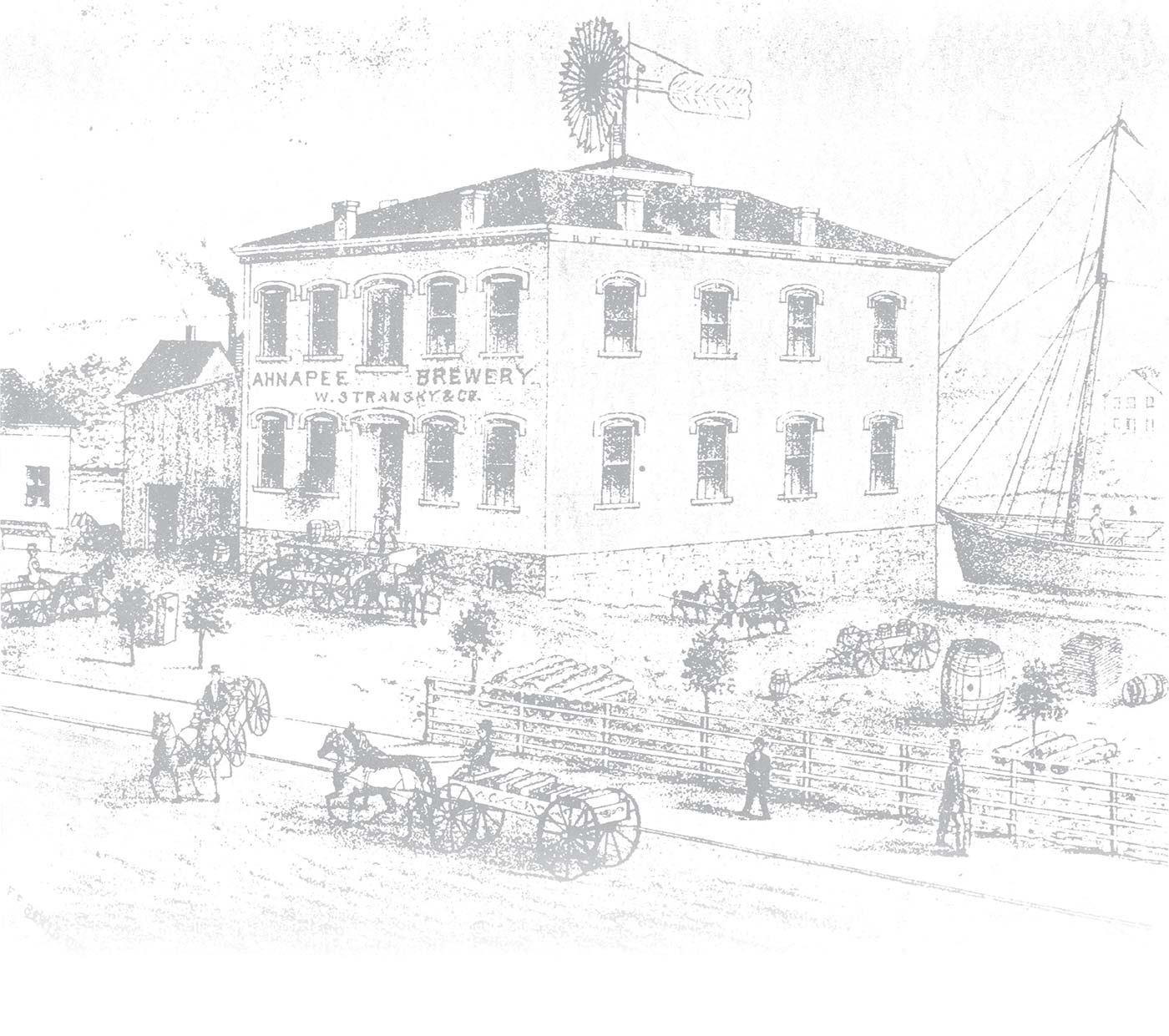HISTORY IS BREWING - VON STIEHL BUILDING
Few buildings in Northeastern Wisconsin are tied to the area’s beverage history as the one that sits above the Ahnapee River in Algoma. Few have as interesting a history, either.
Known to many as the home to von Stiehl Winery, if you dig deeper into the building’s past you’ll find that its beer, rather than wine, to which it owes its original existence.
The building, which originally housed the Ahnapee Brewery, has a vast and varied commercial history over its 150-year history, but it’s the tie between that original brewery and today’s winery that is particularly interesting. That tie is family.
Civil War veteran Henry Schmiling took ownership and contributed to the brewery’s growth beginning in 1879. The brewery would close in 1886 and the building’s ownership would go through various hands, but it found its way back into the Schmiling clan to Henry’s great-great-great-greatnephews Brad and Aric Schmiling. The Schmiling brothers purchased the business from their parents, Bill and Sandy, in 2003.
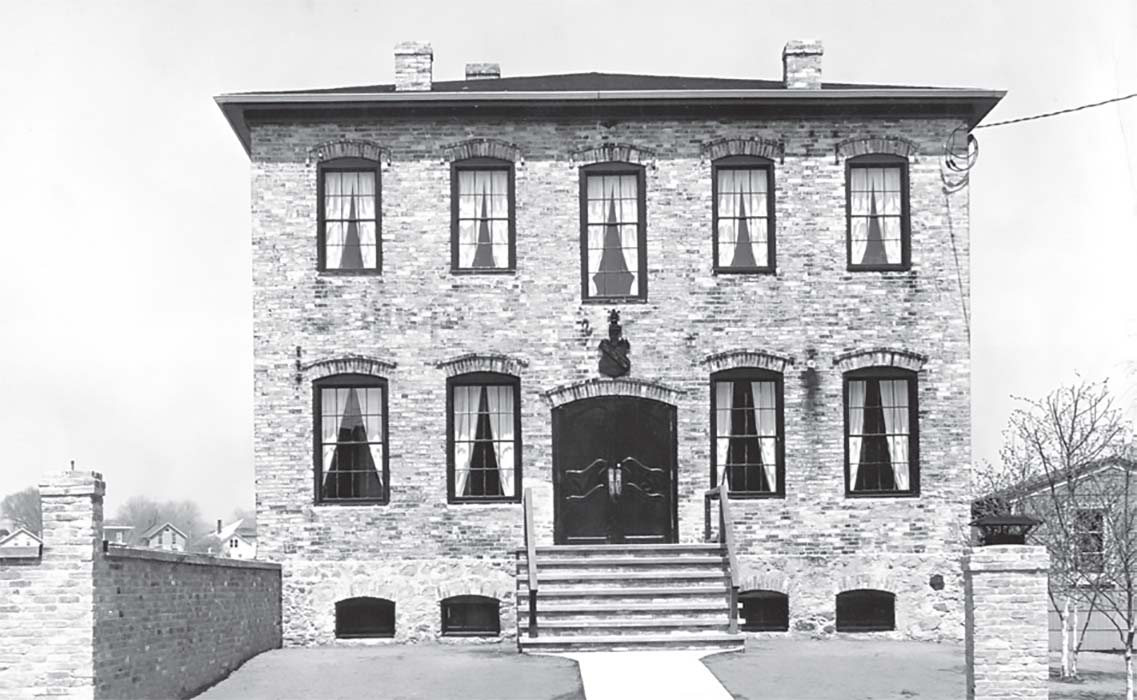 After Dr. Stiehl's restoration. Contributed photo.
After Dr. Stiehl's restoration. Contributed photo.
“This Italianate structure was constructed in 1868 in the same decade as the end of the Civil War,” explained Brad. “It was built by mason Thomas Bacon for partners, Stransky and Seideman, as a brewery manufacturing Ahnapee Lager. The brewery was complete with an ice house, a windmill to grind barley and pump water and three underground vaults. It was considered Kewaunee County’s first “sizeable” building.”
While the definition of “sizeable” isn’t quite clear, it can be assumed that its construction was a significant event in Ahnapee, the name that Algoma had when the city was incorporated in 1879.
With an immigrant population that primarily came from Germany, Bohemia, Scandinavia and Belgium, it shouldn’t come as a surprise that a brewery was high on the list of early businesses.
“I’m sure it was good news to have a brewery in your town,” says Brad with a smile.
The building’s design is a testament to the brewing skills that must have come over from Europe, as all the elements designed into the building, including the storage tunnels and windmill, made for a self-contained manufacturing operation.
Its proximity to the river provided for transportation and ice, two important ingredients to the eventual success of the operation. Not to mention the water, the most basic of ingredients in the brewing process.
“It was very well thought out,” said Schmiling, who seemed especially impressed with the incorporation of the windmill in the building.
The windmill is now gone, but Schmiling points to the support beams for the windmill still visible in the upstairs reception area, originally a malting room and now decorated with photos and artifacts detailing the building’s history.
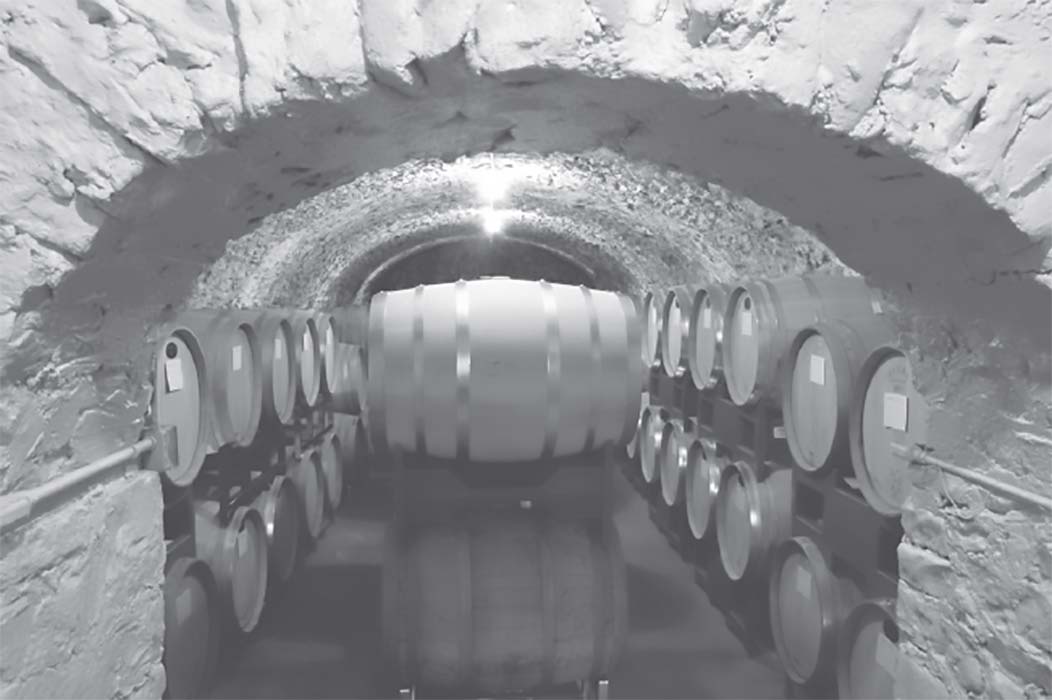
Tunnels beneath von Stiehl Winery. Contributed photo.
HOPS BLIGHT OR COMPETITION?
“After Stransky and Seideman created a successful business shipping barrels on both sailing vessels and sleighs, they sold the brewery to Henry Schmiling,” said Brad, who holds of copy of his great-great-great-greatuncle’s discharge certificate from the Union Army following the Civil War. “The Brewery shut down in 1886.”
Schmiling said that while it has been widely promoted that the business was doomed by a severe blight of the Wisconsin hops crop, he thinks it was more a case of growing competition.
“The railroad had come to town,” said Schmiling. That, combined with Ahnapee’s favorable port, brought alternative options to the Ahnapee’s Amber Lager to the expanding palate of local drinkers. “It had real competition.”
Ironically, one of those competitors was Hagemeister Brewery in Green Bay, which was organized the same year as Ahnapee’s closure and, according to Schmiling, used the Ahnapee building for storage after its demise.
Through a better part of the next century, the building would be used for a variety of purposes.
“The building was then used as a warehouse,” said Schmiling. “Then it was used to make fly nets for horses by the Kelsey Fly Net Co. until 1918 (which was the original business of our current Algoma Net Company). In the 1920s, one of the first gas-powered washing machines, the Algoma Thermo washer, was built here.” After the building sat vacant for a number of years, it was reintroduced to beverage production in 1967.
“Dr. Charles Stiehl bought and remodeled the building,” said Schmiling. “There were no wineries in the state at the time, so he asked the state to create a winery license for his endeavor, making it the oldest winery in the state. He did so well he opened two more von Stiehl wineries in Rhinelander and Baraboo.”
In 1981, the building returned to the Schmiling family when Bill and Sandy Schmiling purchased it.
“My dad really wanted the business,” said Brad, who said he had been in the agricultural sales business. “He wanted something else.” His son came along for the ride, and Brad admits it was hard work. “We hated it,” he now says with a wry smile. “But we got pretty good at labeling bottles by hand.”
But as time went along, the brothers found their niche in the business.
“Aric’s a scientist and is all about clean and cutting edge,” said Brad. “It’s no surprise that our production facility is equipped with some of the most modern equipment known to winemaking, including a state-of-the-art chilling system; fermentation vessels custom-made to his specifications; ozone and nitrogen generators; and the first Borelli Isobaric bottling line in North America.”
The new production facility, which sits across the street from the now-iconic winery building, is an example of the restoration efforts that rest at the core of the Schmiling’s approach to business. Brad now is at the center of von Stiehl’s extensive event offerings, primarily set around the old brewery building.
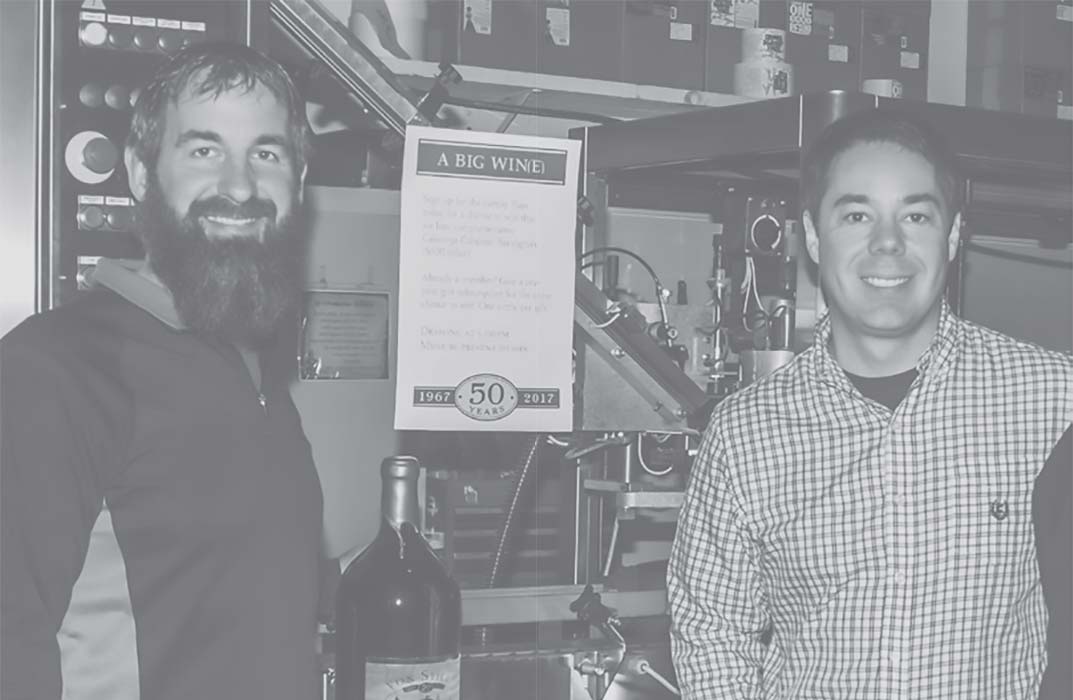 Aric and Brad Schmiling. Contributed photo.
Aric and Brad Schmiling. Contributed photo.
CAPTAIN’S WALK WINERY
Through the years, Brad said he’s gained an appreciation for what the old Ahnapee Brewery represented and its significance in the community. It led the brothers to take a similar approach when they expanded into Green Bay.
Kind of reversing the move that saw Hagemeister expand operations from Green Bay into Algoma in the late 19th century, the Schmilings opened the Captain’s Walk Winery in downtown Green Bay housed in a stunning 19th century home that was built a decade earlier than the Ahnapee Brewery building.
“The home was built over 155 years ago by a gentleman named Elisha Morrow,” said Brad. “Elisha was a pioneer and entrepreneur who found himself moving westward from New Jersey to the eastern plains/western Great Lakes. Elisha later decided to take up residence in Green Bay, where he remained active in cattle, owned and operated a stagecoach line, tannery and politics. Elisha was known to have helped legislate Wisconsin into statehood from a territory in 1848, forge a navigable water way to the Mississippi via the damming of the Fox and Wisconsin rivers, as well as acting as a delegate for the state of Wisconsin in the convention at Chicago in 1860 that nominated Abraham Lincoln to the presidential ballot.”
Clearly, history hasn’t been lost on the Schmilings, and another example was their entry into brewing earlier this decade and the re-introduction of the Ahnapee Brewing Company and its lone product.
“We tried to match it as closely as we could,” said Brad. The brewery opened a tasting house just down the street and overlooking the river on which the original beer left for nearby ports.
While growlers are a modern way of buying and transporting fresh tap beer, “people used to come with pails and fill up on the freshly brewed beer,” said Brad, trying to imagine what a normal day was like around the old brewery.
The Schmilings have since sold Ahnapee Brewery to their original brewmaster, Nick Calaway, and his wife, Kim.
But not before they attempted to replicate the original brew. But they had to change the name from Ahnapee Lager to Gray Wolf.
“People outside the area didn’t know how to pronounce Ahnapee,” Brad explained. “Gray Wolf highlights the legend that was told by the Native Americans that lived on the north bank of the Ahnapee River.”
If you check out the brew list you’ll also find one named Little Soldier, honoring a certain great-great-great-great-uncle so important to the building’s legacy.
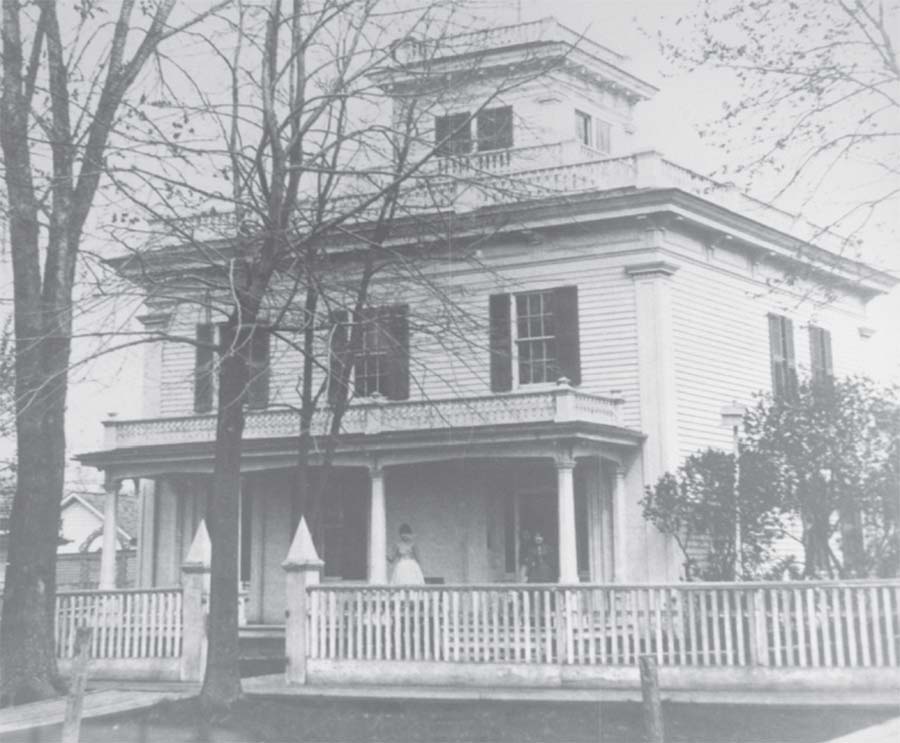
Classic downtown Green Bay home now houses Captain's Walk Winery. Contributed photo.


